Feminine sexuality and the female form is often considered to be the epitome of beauty and grace in the field of art. But it only seems to hold true when it is men who depict the idea of womanhood. The idea of a woman exploring her own identity and expressing it through her art is considered narcissistic and self obsessed, if not ugly, obscene, and crass. However throughout the years, there have been several badass artists who have taken the liberty to explore for themselves, their body and mind.
Feminist art is often believed to have been initiated around the same time as the first wave of feminism. It has expanded and encroached on the borders of the definition of art. It includes unexplored mediums such as live performances, and multidimensional, large-scale projects such as the ‘Womanhouse‘ as part of what one would consider art. However, much of what we know as feminist art today is extremely western and Eurocentric. With the arrival of intersectional feminism, mainstream media has become much more open to other ethnic and cultural expressions of art. This has brought a new visibility to South Asian artists who include and imbibe their traditions and cultures in their definition of feminism and their art.
Also read: These Are 10 Of The Most Interesting Female Directors In South Asia Right Now!
Here are seven badass feminist South Asian artists who shook their communities and the world to the core.
1. Mudupallani (1739-1790)
Mudupallani became infamous for addressing female sexuality with erotic expressions and metaphors in her poem, Radhika Santvanam (Appeasing Radha). She was a Telugu poet attached to the court of Maharaja Pratap Singh of Tanjore. Her poems became extremely controversial as such ideas were not considered appropriate for a non-male poet, or a devadasi such as herself. Various male poets condemned her, claiming that such thoughts should not even be mentioned in a woman’s presence, let alone be allowed to come from a woman’s mouth. To this Mudupallani replied by asking him if he thought modesty was only natural to women.
2. Shirin Neshat
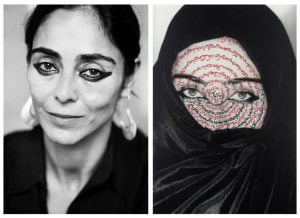
Image Source: The Closet Feminist and Art Net
An Iranian visual artist who grew up in pre-revolutionary Iran, Shirin Neshat was incredibly shocked to see the state of her country when she returned decades later. Her art, centred around the crossroads between traditional Islam and westernisation, femininity and masculinity, and private and public lives, unsettled the public. Her first works, ‘Unveiling’ (1993) and ‘Women of Allah’ (1993-97) garnered huge international recognition. Though banned in Iran, she claims that her work is less of a political statement and more of an attempt to engage emotionally with her audience.
3. Mithu Sen

Image Source: Colombo Art and Artsy
Born in West Bengal, Mithu Sen almost violently rejects the conventional idea of expression through art. Her art revolves around deconstructing ideas such as identity and representation. In fact, her most famous work, ‘UnMYthU’, which was awarded the Skoda Prize in 2010, is called a deconstruction of her personhood. When she was invited to South Korea, she created an exhibition which heavily featured anime porn. This created a huge controversy in Korea and was banned. Her painting ‘Black Candy’ has also been deemed controversial as it depicts male genitals and two men talking about contraceptives and pregnancy.
4. Ismat Chughtai (1915-1991)
Ismat Chughtai is an Indian Urdu writer. Her short story, ‘Lihaaf’, published in the popular literary journal ‘Adab-i-Latif’, led to a huge controversy as she was charged with obscenity and was taken to court. ‘Lihaaf’ contained allusions and hints of several homosexual relations among nobles, which also thwarted the separation between master and servant. During her obscenity trial, she claimed that she raked up such taboo topics so that society may feel the need to clean it up.
Also read: Why Is No One Talking About The Child Sexual Abuse In Chughtai’s Lihaaf?
5. Taslima Nasreen
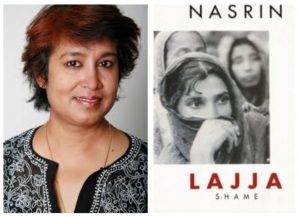
Image Source: India Forums and Goodreads
A Bangladeshi author and physician, Taslima Nasreen is infamous for her essays and her book Lajja (1993) for criticising ‘misogynistic religions’ which included Islam. This created furore in Bangladesh where Islamic fundamentalists issued a fatwa in her name. She was attacked multiple times and there were several strikes organised against her. Lajja was banned and Nasreen had to escape to Europe. Though she tried several times to return to Bangladesh, especially during her father’s death, she was refused entry. She then came to India and settled in Kolkata. However, she was once again met with protests and threats from the fundamental Muslim communities. The Bangladeshi government banned both her autobiographies and sentenced her to one year in prison for committing blasphemy in several published works.
6. Sam Madhu
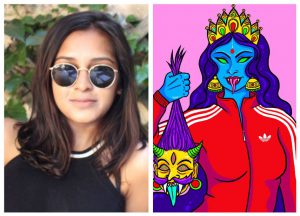
Image Source: Micro Medium and Indulge Express
A New York based artist from Chennai, Sam Madhu received a lot of backlash online for depicting Hindu Goddess Kali in modern forms, such as the above image of her in an Adidas sweatshirt. Previously working with Adidas, she gained popularity on Instagram for her bold, aggressive depiction of modern South Asian females. Through pop-art, she enlarges banal feminine actions to vivid, empowering ideas. She focused her series on the Goddess Kali who she claimed was a ‘symbol of female power, destruction, sexuality and independence’. She attempts to interlink and relate modern ideas of female power with South Asian culture.
7. Joanna Thangiah
Joanna Thangiah is a Sri Lankan artist who grew up in Sydney, Australia. She uses a powerful voice to depicting womanhood through almost surreal digital art. She began drawing in 2014 to cope with mental illness. Her unapologetic, quirky, and body-positive art, which depicts mental illness and the “uglier” parts of the female form such as farting and pooping, has brought her a lot of criticism from viewers online, which is evident from the comments on her social media page. However, Thangiah takes this unsolicited criticism and reclaims it through art, making even graphic t-shirts with messages she receives from those who think her art is obscene.
Such expressions of the feminine voice are inevitably scandalous, as is the existence of a feminine voice, in a field as revered as art, which in itself is a outright defiance of norms. Art, poetry and visual media are all departments generally dominated by men who talk about women. It is when women talk about themselves, and their perception of society that new perspectives of the world open up.
This is by no means an exhaustive or representative list. Suggestions to add to this list are welcome in the comments section.
About the author(s)
Leah is pursuing a bachelors degree in social science. She feels very strongly against the binary perception of gender and sexuality as well as the oppression stemming from the economic class systems.

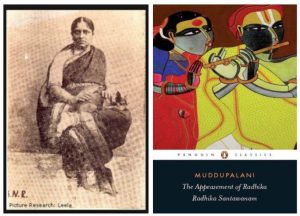

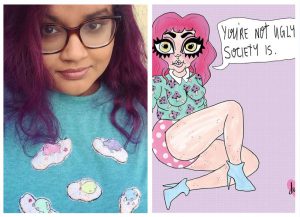
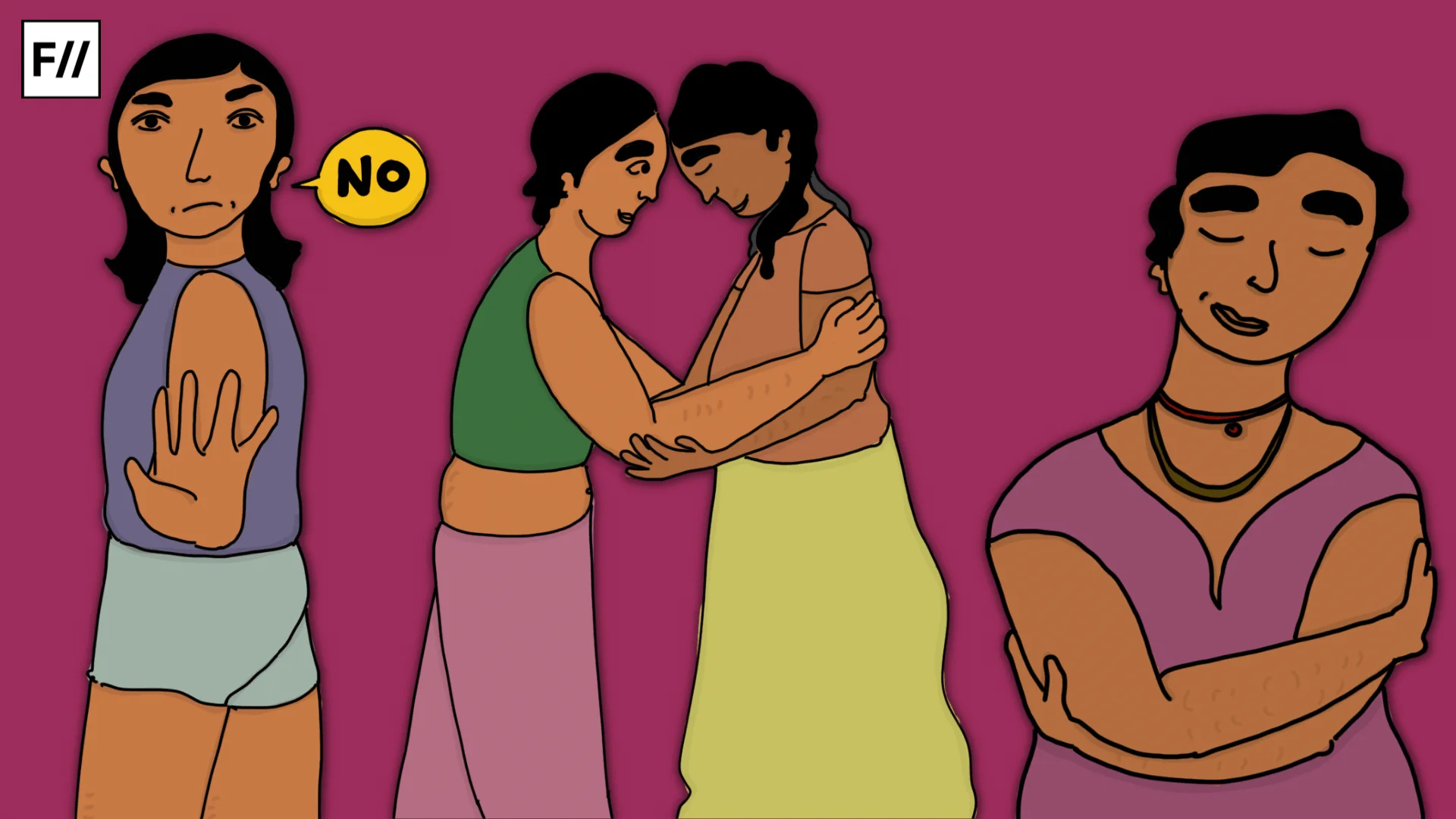
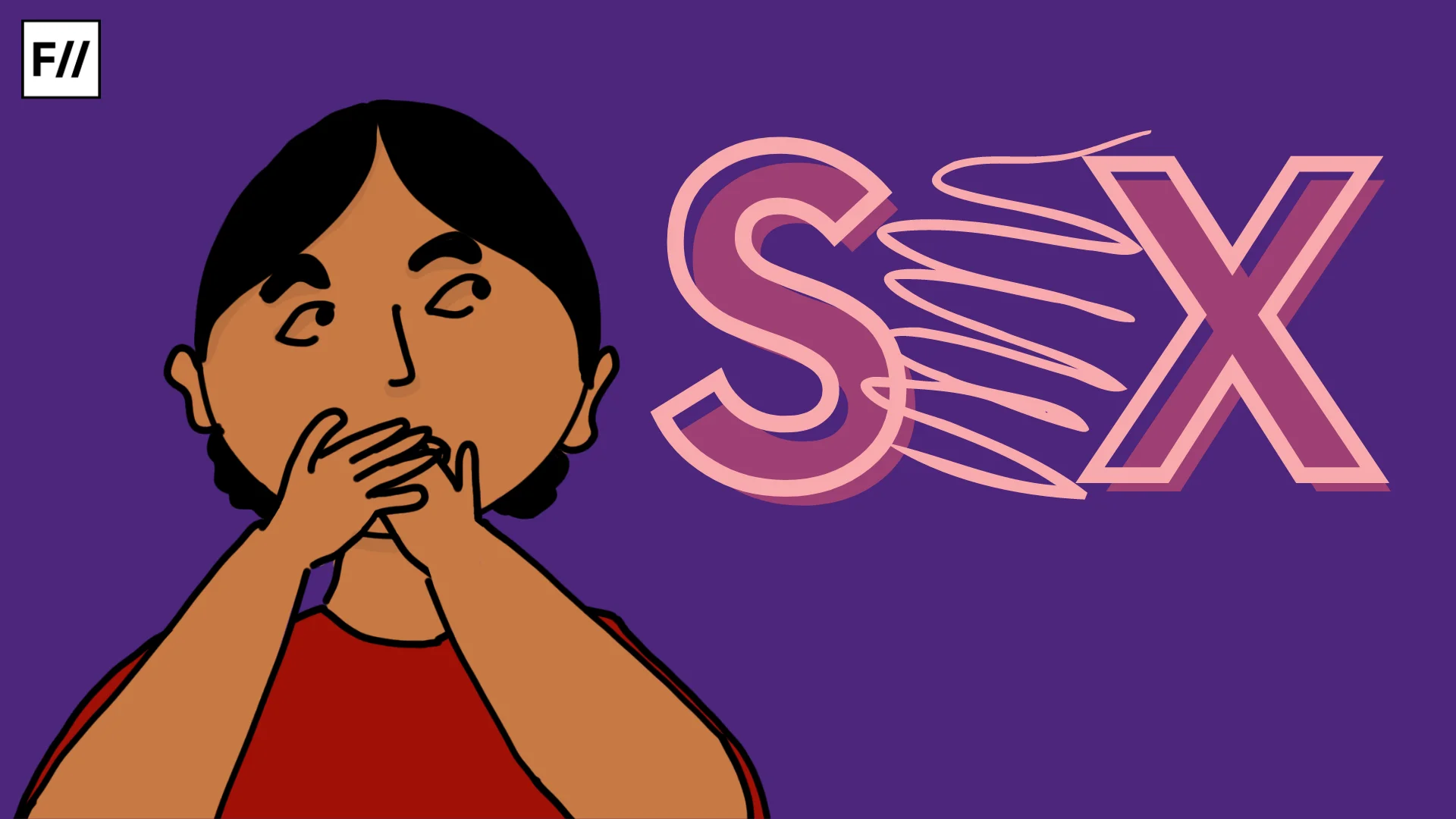


I think we must have mentioned the names of Ferdousi Priyabhashini from Bangladesh and Maddeha Gauhar from Pakistan.